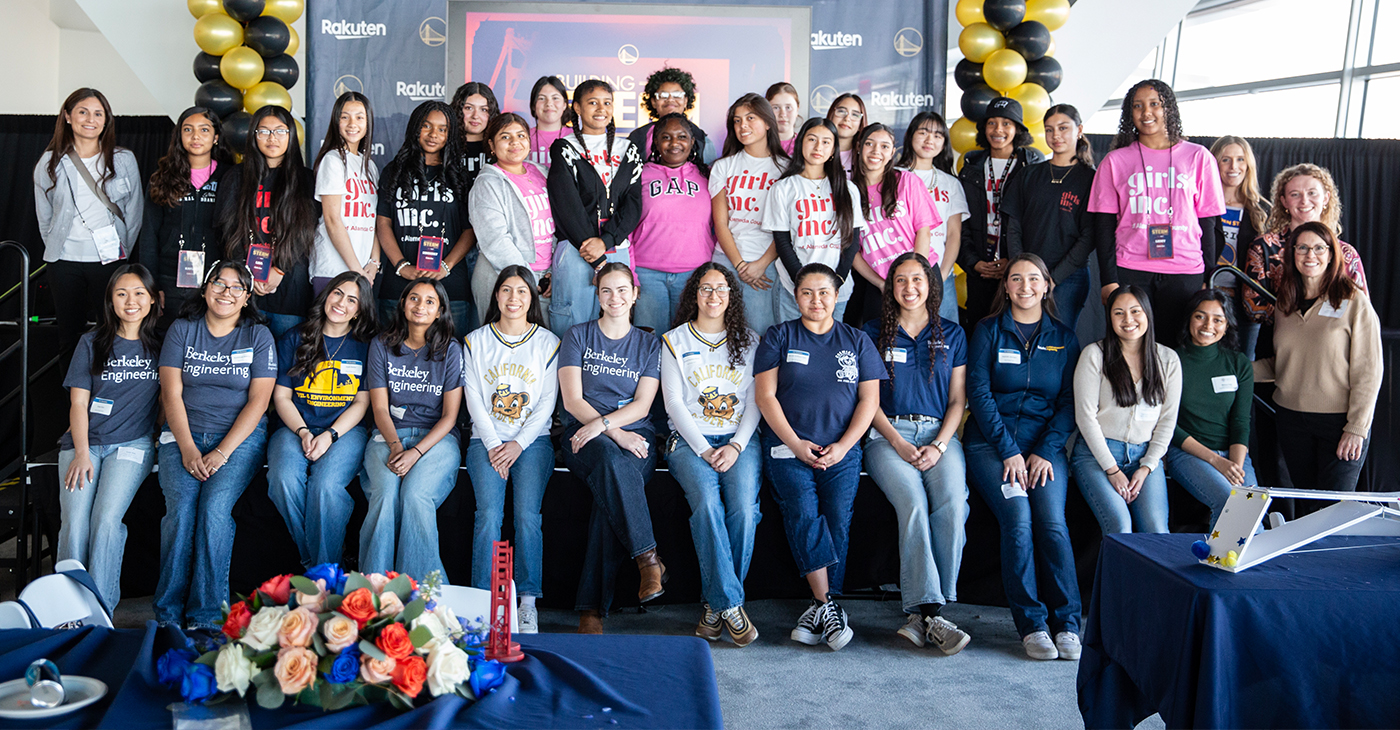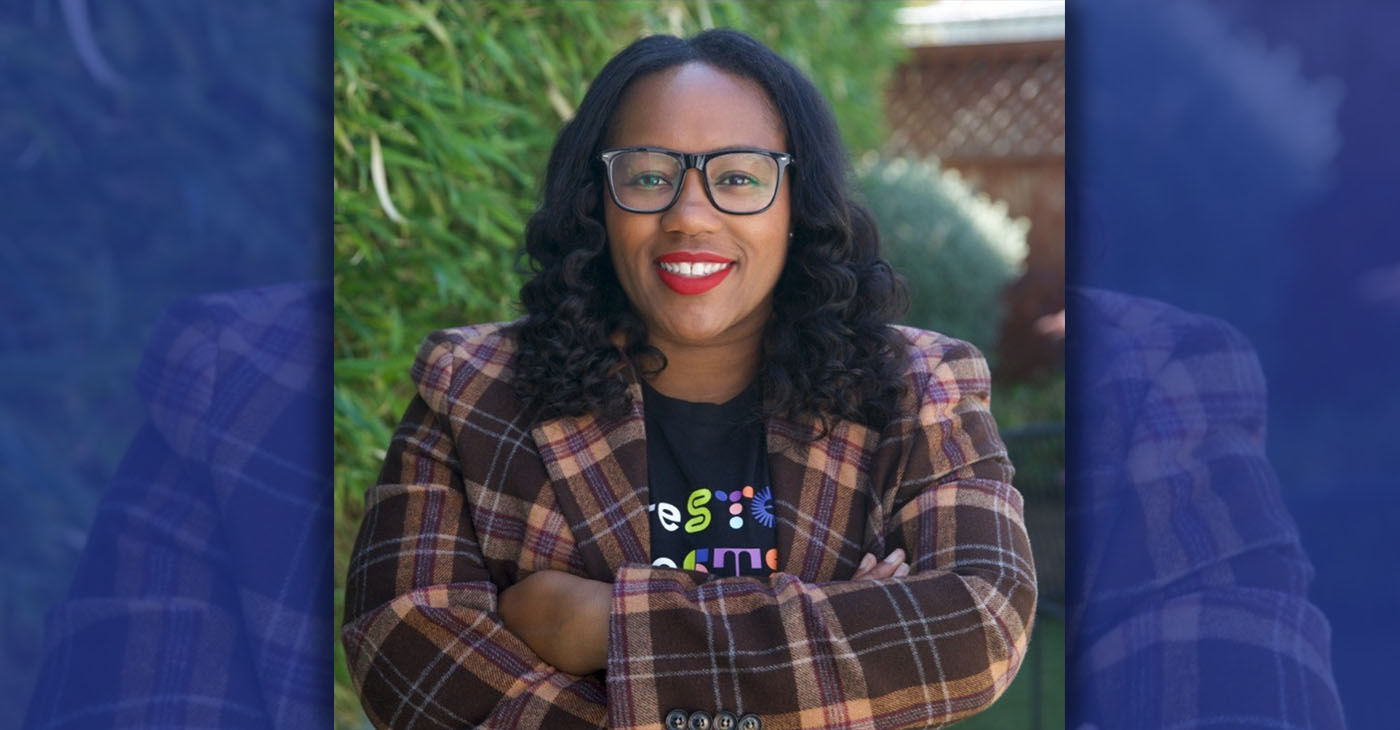Technology
At The Gadget Show: Intel CEO Issues Diversity Challenge

Attendees gather outside the Samsung booth, featuring its new SUHD TV, at the International CES Tuesday, Jan. 6, 2015, in Las Vegas. (AP Photo/Jae C. Hong)
KIMBERLY PIERCEALL, Associated Press
ANICK JESDANUN, Associated Press
LAS VEGAS (AP) — The tech industry says it wants more diversity in its workforce, but the actual hiring doesn’t reflect that. Intel CEO Brian Krzanich challenged his own company and the entire industry to do more.
Meanwhile, the future of driverless cars was the background for a Ford Motor Co. keynote address at the International CES. The carmaker hopes to cure the world’s transportation ills by delivering everything from a quicker trip down the Las Vegas Strip and helping drivers more easily finding a parking spot, to improving access to medical services in remote areas of West Africa.
The gadget show opened to the public Tuesday.
___
A MORE INCLUSIVE WORKFORCE
Krzanich on Tuesday challenged the tech industry to increase the hiring of women and minorities, and he set a goal of full representation in his company’s workforce by 2020.
He said the company will hold its managers accountable by tying their pay to progress. The company also is investing $300 million to improve diversity, including initiatives to create a pipeline of women and minorities entering the technology field.
“This isn’t just good business,” he said. “It’s the right thing to do. When we all come together and commit, we can make the impossible possible.”
He said it was no longer enough to talk about valuing diversity and still “have our workplaces and our industry not reflect the full availability and talent pool of women and underrepresented minorities.”
According to a report on Intel’s website, women made up 24 percent of Intel’s workforce in 2013. Non-Asian minorities made up 14 percent.
The challenge comes as tech companies have begun releasing employment-diversity reports and women have faced harassment and threats in the video-gaming community. Krzanich cited both developments and said his company will regularly release progress reports on hiring.
Krzanich also used a keynote Tuesday to show off the company’s RealSense technology for seeing and understanding depth. With that, Intel showed the ability to use hand gestures to scroll a recipe on a tablet while cooking. Drones thought for themselves and maneuvered an obstacle course without human intervention. One man with visual problems showed how RealSense sensors on his clothing let him know what’s around him through vibrations.
It’s all part of Intel’s efforts to free machines from acting in just two dimensions, defined by the interaction between the screen and input device.
___
CONNECTED CARS
Ford CEO Mark Fields said the company isn’t racing to have the first driverless car on roads but is taking a thoughtful approach to creating an autonomous car for the masses. And with an eye on congested city hubs and a connected generation more keen on car-sharing, mass transit and cycling, the carmaker is getting involved in those avenues, too.
Fields said Ford is conducting 25 worldwide experiments to study driver habits, test ride-sharing and research whether a person’s entire driving history could follow them from car to car regardless of brand in order to get personalized insurance quotes.
Want to try a Mustang for the weekend or need a truck for a move? The company’s employees in Michigan are testing an app-based program where they can trade cars among themselves.
“We’ll learn something from each of these experiments,” Fields said.
___
PRIVACY CHALLENGE
While consumer electronics companies are celebrating a coming bonanza of health trackers, connected cars and “smart” home appliances, the head of the Federal Trade Commission is pressing the tech industry to protect consumer privacy.
Powerful networks of data sensors and connected devices, dubbed the “Internet of Things,” will collect a vast trove of user information that represents “a deeply personal and startlingly complete picture of each of us” – including our finances, health and even religious leanings, said Edith Ramirez, the chairwoman of the Federal Trade Commission.
Ramirez urged the global electronics companies, Internet giants and tech startups at CES to make data security a priority as they build new products. She also called on companies to give consumers more control over how their data is used, and to collect only the data that’s necessary for a product to perform its function.
Ramirez didn’t propose specific regulations, but her remarks underscore the Obama administration’s concerns over consumer privacy.
___
SPECIAL CASES LINK TABLETS TO DATA NETWORKS
It’s often tempting to buy a Wi-Fi-only model of a tablet computer because it’s cheaper – by $130 in the case of the iPad. But what if you decide later you want connectivity on the go?
AT&T will soon sell cases to connect your Wi-Fi tablet to its network. You’ll need to buy data service, of course, and it’s not immediately clear whether the cases will work with service from rival carriers.
The Modio cases will initially work with recent iPad models. AT&T didn’t announce prices or release dates. The cases also will allow users to expand battery and storage capacity.
Many Android tablets have already slots for microSD storage cards, but iPads do not.
___
CONSUMERS SEEK MORE AFFORDABLE SMARTPHONES
The smartphone is no longer a premium product, as consumers buy them more frequently and increasingly look for more affordable prices, Lenovo CEO Yang Yuanqing said in an interview with The Associated Press on Tuesday.
Speaking at AquaKnox, a restaurant at the Venetian hotel and casino that his company converted into a glitzy temporary showroom, the Lenovo boss said the smartphone has become such a mainstream item in the U.S. that consumers are looking for ways to replace them more frequently, so they can keep up with the latest features and fashions.
Meanwhile, companies are also selling more smartphones in developing regions, where people can’t afford the higher-end models. That’s consistent with figures released this week by organizers of the International CES that show the average selling price of smartphones worldwide is expected to fall from around $440 in 2010 to about $275 this year.
Yang said Lenovo is looking to compete both on price and features in the United States market. He also said the Motorola smartphone business, which Lenovo bought from Google last year, is on track to become profitable in the next year or so.
___
AP Technology Writer Brandon Bailey contributed to this report.
Copyright 2015 The Associated Press. All rights reserved. This material may not be published, broadcast, rewritten or redistributed.
Alameda County
OPINION: Argent Materials Oakland CleanTech Community Asset Helps Those In Need
Alameda County Supervisor Lena Tam had this to say about Argent Materials as an Oakland community asset: “Congratulations to Argent Materials and its President and Founder, Bill Crotinger! The company is now fully operational, recycling an impressive 99.99% of concrete and asphalt debris, which helps divert thousands of tons of construction waste from landfills. They are also proud to announce that 50% of their team consists of local hires. In celebration of Thanksgiving, and despite stormy weather last week, the Alameda County Sheriffs, alongside Mr. Crotinger and Argent Materials’ dedicated staff distributed turkeys and pies as a heartfelt gesture of gratitude to the community.”

Zennie Abraham
CEO, Zennie62Media
Argent Materials, the Oakland business that turns old concrete and asphalt into new construction products, generally goes by “Argent Materials Oakland CleanTech” but should be called “Argent Materials East Oakland CleanTech for The Community”. Here’s why.
First, Argent Materials is located at 8300 Baldwin St, right in the Coliseum Industrial Zone, just a three-minute drive from the Oakland-Alameda County Coliseum Complex. That’s in East Oakland, and just a city-block walk from the Oakland Coliseum BART Station.
Second, Argent Materials has been a friend to East Oakland and what some, like the members of the Oakland Private Industry Council, would call a “community asset”. In 2024, Argent Materials founder and President Bill Crotinger was named Leader of the Year by the Oakland Private Industry Council (OPIC) “I was humbled and honored to be named Leader of the Year by the Oakland Private Industry Council. Truly an honor. My heartfelt thanks to my friend and mentor Pastor Raymond Lankford and all the wonderful people at OPIC.”
Alameda County Supervisor Lena Tam had this to say about Argent Materials as an Oakland community asset: “Congratulations to Argent Materials and its President and Founder, Bill Crotinger! The company is now fully operational, recycling an impressive 99.99% of concrete and asphalt debris, which helps divert thousands of tons of construction waste from landfills. They are also proud to announce that 50% of their team consists of local hires. In celebration of Thanksgiving, and despite stormy weather last week, the Alameda County Sheriffs, alongside Mr. Crotinger and Argent Materials’ dedicated staff distributed turkeys and pies as a heartfelt gesture of gratitude to the community.”
ABI Foundry reports that Argent Materials led a community clean up for the residents and businesses of Russett Street as well as San Leandro Street. An ABI Foundry team member said “Bill Crotinger at Argent Materials spearheaded the initiative to clean San Leandro street, from Hegenburger to 98th Ave. along the side of BART. AB&I enjoyed participating along with Acts Full Gospel C.O.G.I.C (Men of Valor), Good Hope Missionary Baptist Church-Oakland (Reverend Michael Jones) and Argent Materials. You should see how it looks now. It is AMAZING! It takes an ambitious mind to make a difference block by block.”
What Is Cleantech And Why Is It Important to Oakland And Argent Materials?
Clean technology (Clean Tech) refers to products, services, and processes that mitigate negative environmental impacts by increasing energy efficiency, promoting resource sustainability, and minimizing waste and pollution, ultimately contributing to a low-carbon, and more sustainable economy.
What is The Clean Tech of Argent Materials of Oakland?
In Argent Materials’ context, “cleantech” refers to their sustainable business model which includes recycling concrete and asphalt into new aggregate materials, diverting waste from landfills, and using renewable diesel for their fleet to achieve carbon neutrality and protect the environment. This business approach Argent Materials uses aligns with the broader definition of cleantech, which involves products, services, and processes that reduce negative environmental impacts through resource efficiency and environmental protection
Clean Tech, or green tech as Argent Materials of Oakland does it, is defined as any technology that minimizes negative environmental impact by reducing human consumption of natural resources and by promoting more sustainable and efficient resource use.
Argent Materials will continue to be a cleantech community asset to Oakland well into the future.
Stay tuned.
Activism
Golden State Warriors Program Is Inspiring Next Generation of Female Engineers
Breaking down barriers and biases that deter young girls from pursuing STEAM subjects is essential for creating a level playing field and ensuring equal opportunities for all. By challenging stereotypes and promoting a culture of inclusivity and diversity in STEAM fields, experts believe young girls can be empowered to pursue their interests and aspirations without limitations confidently. Encouraging mentorship, providing access to resources, and celebrating girls’ achievements in STEAM are all crucial steps in creating a supportive environment that fosters success.

By Y’Anad Burrell
The Golden State Warriors and e-commerce giant Rakuten are joining forces to inspire the next generation of female engineers through Building STEAM Futures, part of The City Calls campaign.
Organizers say the initiative is founded on the idea that science, technology, engineering, arts, and mathematics (STEAM) are crucial fields for innovation and progress, and empowering young girls to pursue careers in these areas is more important than ever. Studies consistently show that girls are underrepresented in STEAM fields, resulting in a gender disparity that limits potential and hinders diversity.
Breaking down barriers and biases that deter young girls from pursuing STEAM subjects is essential for creating a level playing field and ensuring equal opportunities for all. By challenging stereotypes and promoting a culture of inclusivity and diversity in STEAM fields, experts believe young girls can be empowered to pursue their interests and aspirations without limitations confidently. Encouraging mentorship, providing access to resources, and celebrating girls’ achievements in STEAM are all crucial steps in creating a supportive environment that fosters success.
On Saturday, March 8, International Women’s Day, the Warriors and Rakuten hosted 20 middle school girls from Girls Inc. of Alameda County at Chase Center’s Above the Rim for a hands-on bridge-building experience. The young girls from Girls, Inc. of Alameda County had an opportunity to design, build and test their own bridge prototypes and learn the fundamentals of bridge construction from the Engineering Alliance and the UC Berkeley Steel Bridge Team.
This STEAM experience for the girls followed the first session in January, where they took a behind-the-scenes tour of the Golden Gate Bridge, learning about its design and construction from industry experts. The City Calls campaign, tipped off with the unveiling the Warriors’ new bridge-themed City Edition jerseys and court design earlier this year.
Activism
Self-eSTEM Empowers BIPOC Women, Girls in Science, Math
In January 2025, Self-eSTEM will launch digital and generative AI programming, which provides digital literacy and AI literacy training through an entrepreneurial project-based activity. This programming will be a hybrid (i.e. in-person and online). Additionally, thanks to a grant from Comcast, in spring 2025, the organization will have a co-ed series for middle and high school students.

By Y’Anad Burrell
Special to The Post
In a world where technology plays an increasingly central role in all aspects of life, the importance of Science, Technology, Engineering, and Math (STEM) education cannot be overstated. Recognizing the significance of STEM for the future, focusing on young women and girls is a critical step in achieving gender equality and empowering the next generation.
Self-eSTEM, an Oakland-based non-profit organization, was founded by Adamaka Ajaelo, an Oakland native who had a successful corporate career with several Bay Area technology and non-tech companies. Ajaelo boldly decided to step away from these companies to give 100% of her time and talent to the non-profit organization she started in 2014 in the belief that she can change the game in innovation and future STEM leaders.
Over the course of a decade, Ajaelo has provided futurist tech programming to more than 2,000 BIPOC women and girls. The organization has an Early STEM Immersion Program for ages 7-17, Emerging Leaders Workshops for ages 18-25 and volunteer network opportunities for ages 25 and up.
In January 2025, Self-eSTEM will launch digital and generative AI programming, which provides digital literacy and AI literacy training through an entrepreneurial project-based activity. This programming will be a hybrid (i.e. in-person and online). Additionally, thanks to a grant from Comcast, in spring 2025, the organization will have a co-ed series for middle and high school students.
While the organization’s programs center on innovation and technology, participants also gain other valuable skills critical for self-development as they prepare for a workforce future. “Self-eSTEM encourages young women to expand on teamwork, communication, creativity, and problem-solving skills. The organization allows young women to enter STEM careers and pathways,” said Trinity Taylor, a seventh-year innovator.
“Our journey over the last decade is a testament to the power of community and opportunity, and I couldn’t be more excited for what the future holds as we continue to break barriers and spark dreams,” said Ajaelo.
“By encouraging girls to explore STEM fields from a young age, we foster their intellectual growth and equip them with the tools needed to thrive in a competitive global economy,” Ajaelo says.
Empowering young girls through STEM education is also a key driver of innovation and progress. When young women and girls are encouraged to pursue careers in STEM, they bring unique perspectives and problem-solving approaches to the table, leading to more diverse and inclusive solutions. This diversity is crucial for driving creativity and pushing boundaries in scientific and technological advancements.
Self-eSTEM has fundraising opportunities year-round, but year-end giving is one of the most critical times to support the program. Visit www.selfestem.org to donate to the organization, as your generosity and support will propel programming support for today’s innovators.
You will also find more details about Self-eSTEM’s programs on their website and social channels @selfestemorg
-

 Activism4 weeks ago
Activism4 weeks agoIN MEMORIAM: William ‘Bill’ Patterson, 94
-

 #NNPA BlackPress3 weeks ago
#NNPA BlackPress3 weeks agoBeyoncé and Jay-Z make rare public appearance with Lewis Hamilton at Las Vegas Grand Prix
-

 Activism3 weeks ago
Activism3 weeks agoOakland Post: Week of November 19 – 25, 2025
-

 #NNPA BlackPress4 weeks ago
#NNPA BlackPress4 weeks agoLewis Hamilton set to start LAST in Saturday Night’s Las Vegas Grand Prix
-

 #NNPA BlackPress2 weeks ago
#NNPA BlackPress2 weeks agoLIHEAP Funds Released After Weeks of Delay as States and the District Rush to Protect Households from the Cold
-

 Alameda County2 weeks ago
Alameda County2 weeks agoSeth Curry Makes Impressive Debut with the Golden State Warriors
-

 Activism3 weeks ago
Activism3 weeks agoOakland Post: Week of November 26 – December 2, 2025
-

 #NNPA BlackPress2 weeks ago
#NNPA BlackPress2 weeks agoSeven Steps to Help Your Child Build Meaningful Connections









































